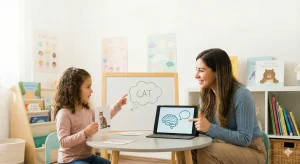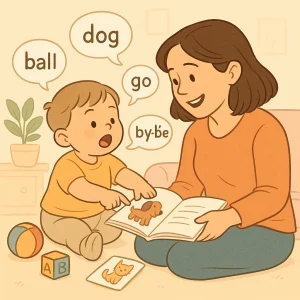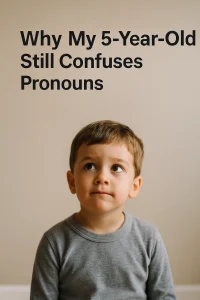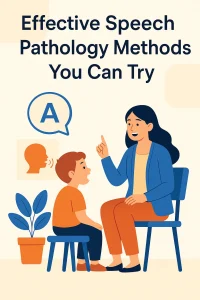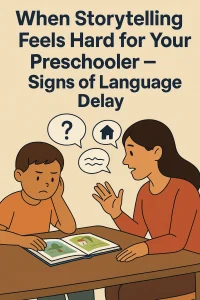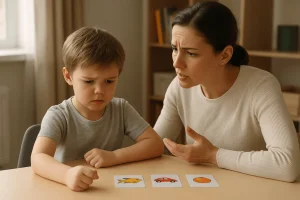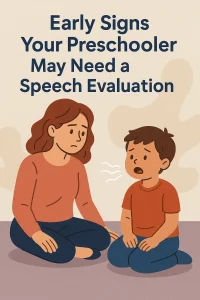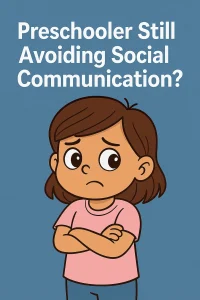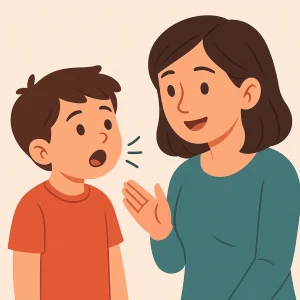How to Use Social Stories to Support Kids with Autism
By Wellness Hub
Last Updated: January 7, 2025
Social stories are a pivotal tool in autism education, designed to help children understand and navigate social interactions. These carefully crafted narratives break down complex behaviors into understandable steps, enabling autistic children to engage more confidently with the world around them. Since their inception in the early 1990s, social stories have become a widely adopted method for enhancing communication skills, gaining popularity for their simplicity and effectiveness. As a practical teaching tool, they are instrumental in fostering both social understanding and independence in children with autism.
Parenting kids with special needs is tough—Our Social Stories make it simpler. Download now and give your child the tools to thrive!
Start HereWhat are Social Stories for Autism?
Social stories are simple, tailored stories designed to teach social skills to children with autism. They explain social situations, showing what to expect and how to act. Each story is written in clear, straightforward language and focuses on a specific event or behavior, helping children visualize and practice appropriate social interactions.
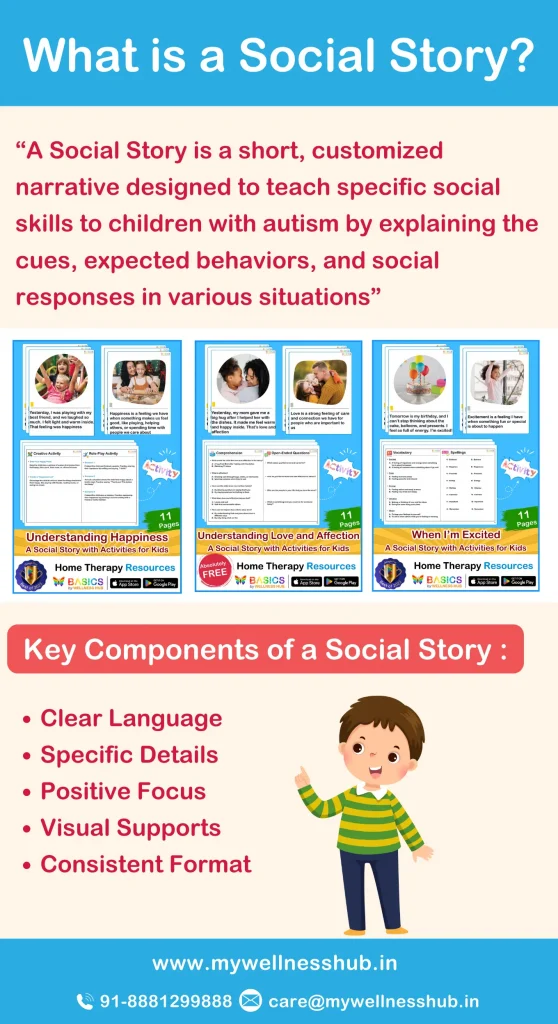
The Importance of Social Stories in Autism Therapy
Social stories are crucial in autism therapy because they:
- Enhance understanding: They clarify social rules, helping children grasp what’s expected in different situations.
- Improve communication: These stories provide examples of how to use words and responses in social settings.
- Increase predictability: Knowing what might happen next in social interactions can make these situations less stressful for autistic children.
- Boost confidence: Mastering social skills can make children feel more confident and independent.
Creating Effective Social Stories
Key Elements of a Successful Social Story
Creating a successful social story involves focusing on several essential components that ensure the story is effective and engaging for children with autism:
- Simplicity: Use clear and straightforward language that is easy for the child to understand. Avoid metaphors or ambiguous phrases that could confuse the reader.
- Specificity: Each story should address specific behaviors or situations. Be direct about the context, the expected behaviors, and the social cues involved.
- Relatability: The story should be relevant to the child’s daily life and experiences. This can involve personalizing the story to include the child’s interests or routine environments.
- Visual Support: Including pictures or illustrations can help clarify the message and make the story more engaging for visual learners.
- Positive Reinforcement: Focus on positive outcomes and behaviors. Highlight the benefits of following social cues properly.
- Consistency: Use a consistent format with a clear beginning, middle, and end to help the child understand the structure and anticipate what comes next in the story.
Step-by-Step Guide to Writing Social Stories
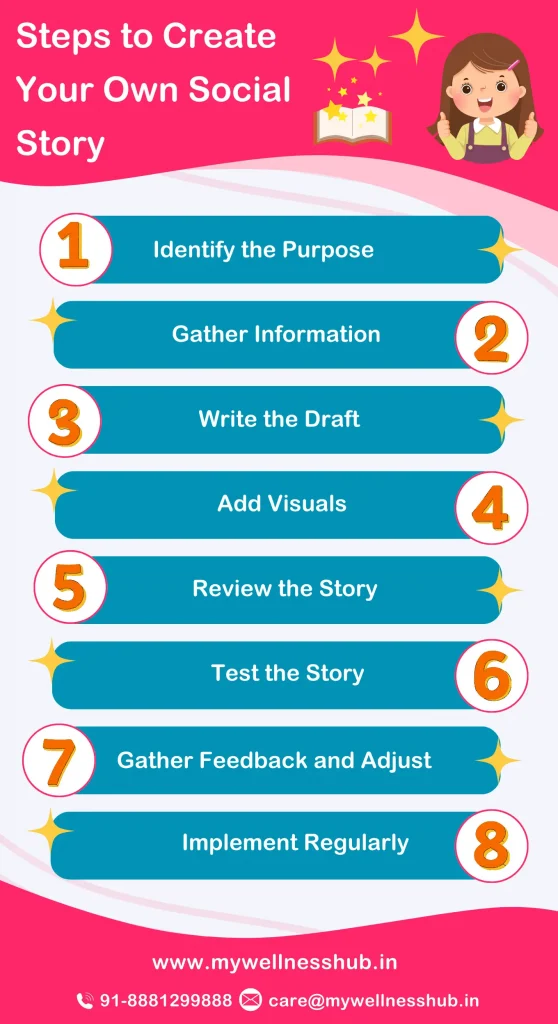
Here’s a simple guide to help you craft effective social stories tailored for autistic children:
- Identify the Purpose: Start by deciding what behavior or social skill you want to address. Is it sharing toys, greeting others, or taking turns speaking?
- Gather Information: Understand the child’s level of comprehension and what aspects of the social interaction they find challenging.
- Write the Story:
- Introduction: Set the scene by introducing the characters, location, and context.
- Body: Describe the situation with details on what happens and the social cues to pay attention to. Use descriptive sentences to explain what the child should observe or do.
- Conclusion: End with a positive note on the outcome of following the social rules.
- Add Visuals: Include images or symbols that relate to the story’s content. This can be drawings, photos, or icons that illustrate key points or actions.
- Review and Revise: Share the story with colleagues or other educators to get feedback. Make sure the story is clear and the language is suitable for the child.
- Test the Story: Introduce the social story to the child in a calm and comfortable setting. Observe their reaction and engagement, and be ready to adapt the story if needed.
Steps to Create a Social Story
| Step | Action Items | Tips |
|---|---|---|
| Identify the Purpose | Determine the behavior or skill to address. | Consider the child’s needs and the specific situation. |
| Gather Information | Collect details about the situation and the child’s perspective. | Use observations and feedback from caregivers or teachers. |
| Write the Draft | Compose the story focusing on clarity and focus. | Keep sentences simple and direct. |
| Add Visuals | Incorporate relevant images or symbols. | Choose visuals that clearly represent the story’s points. |
| Review and Revise | Edit for simplicity and accuracy. | Ask others for feedback to improve clarity and effectiveness. |
| Test the Story | Introduce the story to the child in a calm setting. | Observe the child’s response and engagement. |
| Implement Regularly | Use the story regularly to reinforce learning. | Integrate the story into daily routines. |
Examples of Social Stories for Autism
Social Stories for Daily Routines
Social stories can simplify daily routines for autistic children by providing clear, step-by-step explanations. Here are a few practical examples:
- Getting Ready for School: This story can list the morning steps like waking up, brushing teeth, dressing, and getting on the bus. It shows what to do and in what order, helping the child follow a routine smoothly.
- Mealtime Manners: A story for mealtime might explain washing hands, using utensils, and asking politely for things at the table, complete with pictures to show each step.
- Bedtime Routine: A bedtime story can outline picking pajamas, brushing teeth, and story time, making the night routine predictable and calm.
Social Stories for School Settings
Social stories can also guide children through common school situations:
- Making Friends at School: This story might suggest ways to greet peers, share toys, and join in games, with phrases and actions the child can practice.
- Classroom Behavior: A story about the classroom could cover listening to the teacher, raising a hand to speak, and following class rules, all illustrated to help understanding.
- Handling Transitions: For moving between activities or classes, a story can describe what will happen and what the child should do, reducing stress about changes.
Implementing Social Stories in Learning
When and How to Use Social Stories
Social stories can be particularly effective when used at the right times and in the right contexts. Here are some guidelines on when to use them:
- Before Changes: Introduce social stories when you anticipate changes in routine or new experiences, like starting a new school year or visiting a new place.
- During Challenges: Use them before situations that are typically challenging for the child, such as social events or crowded places.
- Everyday Learning: Include social stories in daily learning, especially when teaching new social rules or expected behaviors in different environments like school, the playground, or at home.
Simplify challenging situations like bedtime or sharing. Download our Social Stories to help your child with Autism navigate life confidently.
Click to DownloadMeasuring the Impact of Social Stories
To see if social stories are helping your child, here’s how you can measure their effectiveness:
- Watch Behavior: Notice if the child’s behavior improves in situations covered by the social stories. Look for signs that they are understanding and following social rules better.
- Ask Others: Get feedback from teachers, family members, and therapists who also interact with the child. They can provide insights into the child’s social improvements.
- Child’s Input: Talk to the child about the social stories. Ask if the stories help them understand how to act in different situations and how they feel about those situations.
- Use Consistency: Keep track of how often you use the social stories. Regular use tends to lead to better outcomes.
- Make Adjustments: If a story isn’t working well, it might need some changes. Make sure the stories are clear and helpful for the child.
About Wellness Hub
Our Commitment to Autism Education
At Wellness Hub, we’re dedicated to enhancing autism education with innovative tools and resources. We understand that every child’s learning journey is unique, which is why we provide adaptable educational solutions. Our products are designed to support personalized learning, helping parents, therapists, and educators effectively teach and engage children with autism.
Discover Our Autism Therapy Tools
Wellness Hub offers a variety of tools specifically designed to help with social stories and other educational approaches for autism:
- Customizable Social Story Templates: These are easy to use and adapt, making it straightforward for anyone to create engaging social stories tailored to specific needs.
- Visual Scheduling Aids: These aids help children understand daily routines and transitions, which can reduce anxiety and improve their ability to manage new situations.
- Training and Support: We provide training sessions, workshops, and resources to help educators and parents make the most of our products.
Conclusion
Social stories are a fantastic way to help kids with autism understand social cues and interact more confidently. These stories simplify complex behaviors, making daily interactions more manageable and less stressful for children. We encourage everyone to try creating their own social stories. It’s a rewarding way to support the unique needs of each child. For more guidance and resources, visit Wellness Hub. Our tools, including customizable templates and interactive apps, make learning fun and effective.
Frequently Asked Questions:
1. What is a social story?
A social story is a short narrative designed to teach children with autism about social behaviors and expectations through specific examples.
2. How do social stories help children with autism?
Social stories explain social situations to autistic children, helping them understand what to expect and how to behave in various social interactions.
3. Can social stories improve behavior in autistic children?
Yes, social stories can significantly improve behavior by providing clear guidelines on how to act in different situations, which reduces confusion and anxiety.
4. What are the key elements of an effective social story?
An effective social story should be simple, direct, and relevant, with positive descriptions and visual supports to illustrate the behaviors being taught.
5. How often should I use social stories with my child?
Regular use is recommended, especially before anticipated challenging situations or changes in routine, to reinforce learning and understanding.
6. Where can I find templates for social stories?
Templates for social stories can be found online at resources like Wellness Hub, which offers customizable options tailored to various needs.
7. Can I create my own social stories for my child?
Absolutely! Creating personalized social stories that reflect your child’s specific experiences and challenges can be more effective.
8. What scenarios are suitable for social stories?
Social stories are great for teaching about daily routines, social interactions at school, visits to new places, and any new or challenging situations.
9. How do I know if a social story is working?
Observe your child’s behavior before and after using the story. Improvements in understanding and following the social rules are good indicators of success.
10. How long should a social story be?
A social story should be short—usually one to two pages with a few sentences per page. Focus on one topic to keep it clear and easy for kids to follow. Include pictures to help explain the story.
About the Author:
Shravanaveena Gajula
M.Sc ., Speech and Language Pathology (5+ years of experience)
Shravanaveena Gajula is a dedicated Audiologist and Speech-Language Pathologist with a BASLP and an M.Sc in Speech and Language Pathology. With experience spanning multiple settings, including Wellness Hub and Ashray Akruti, Veena specializes in a wide range of disorders from developmental issues in children to speech and language assessments in adults. Her expertise includes parent counseling, managing speech sound and fluency disorders, and creating individualized therapy programs. Veena is also PROMPT certified and an author of several insightful blogs on speech and language pathology, aiming to educate and assist caregivers in supporting their loved ones.
Book your Free Consultation Today
Parent/Caregiver Info:
Client’s Details:
* Error Message

